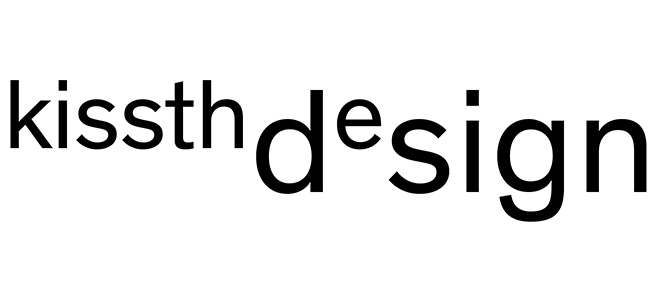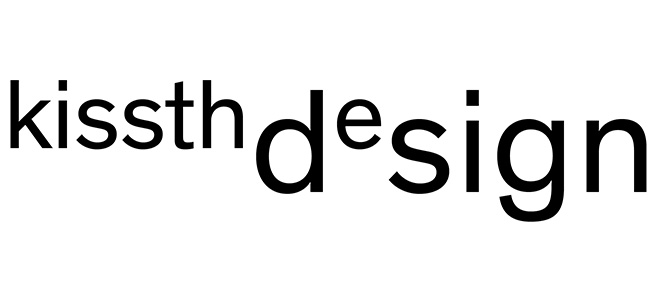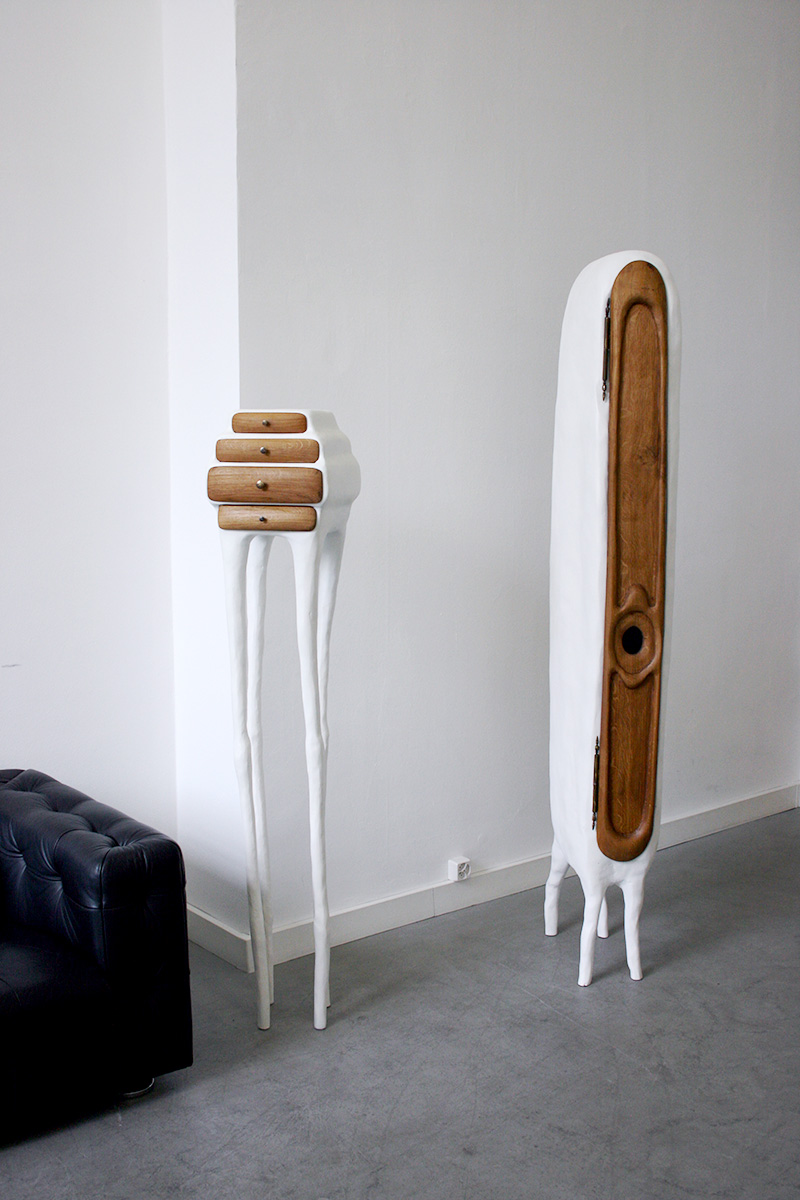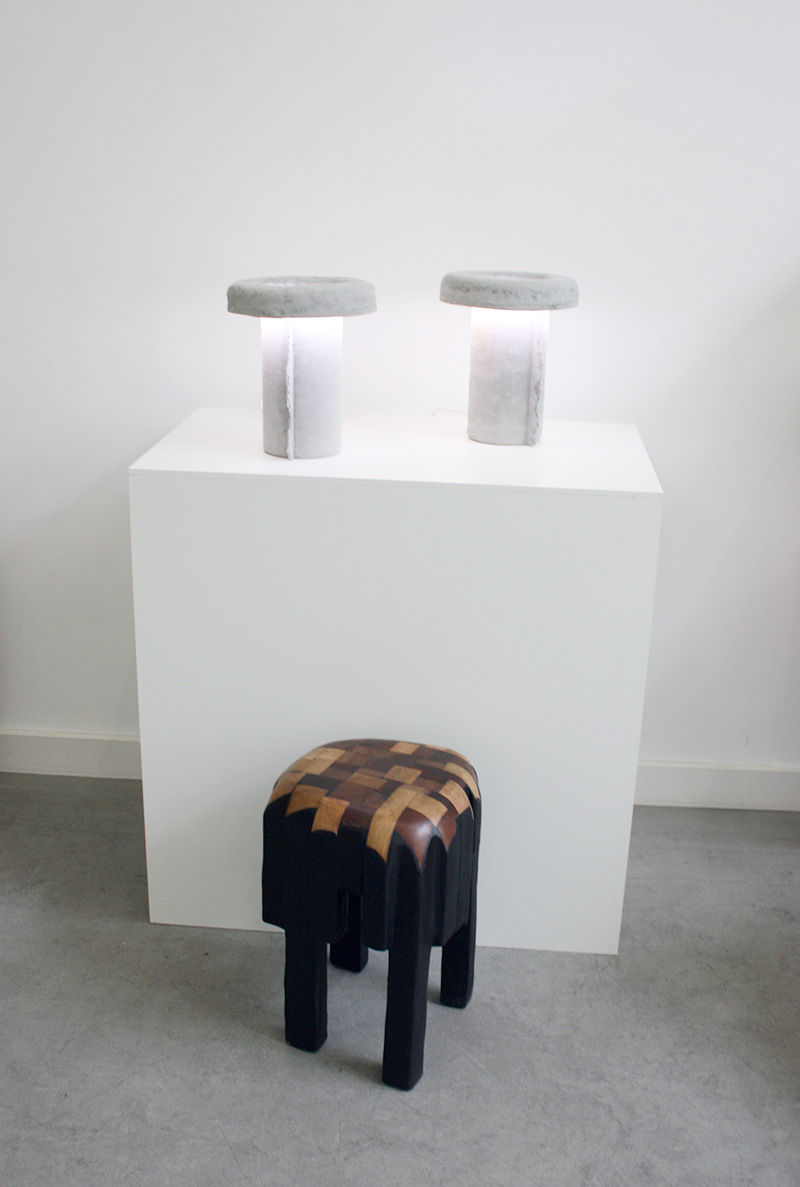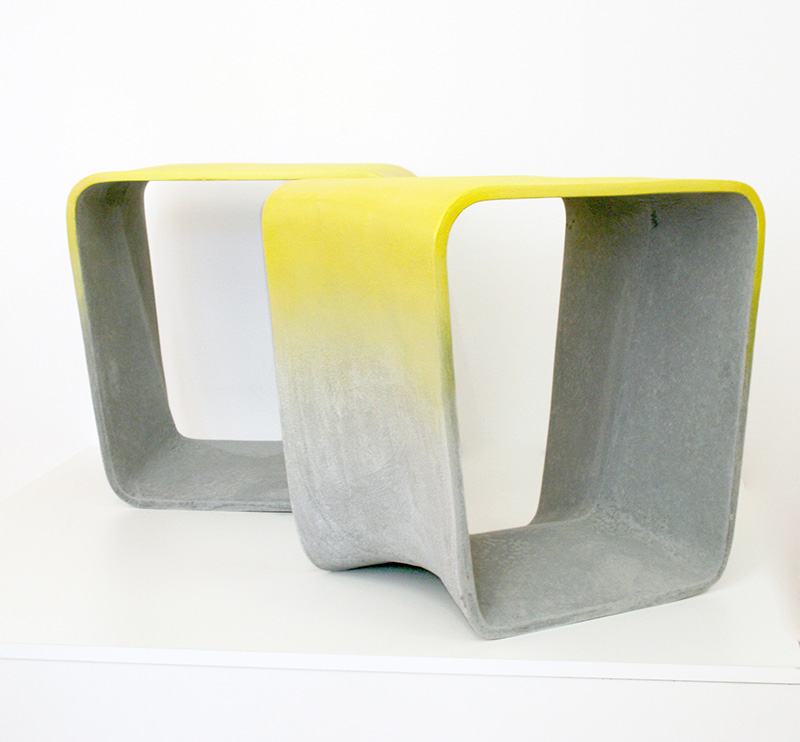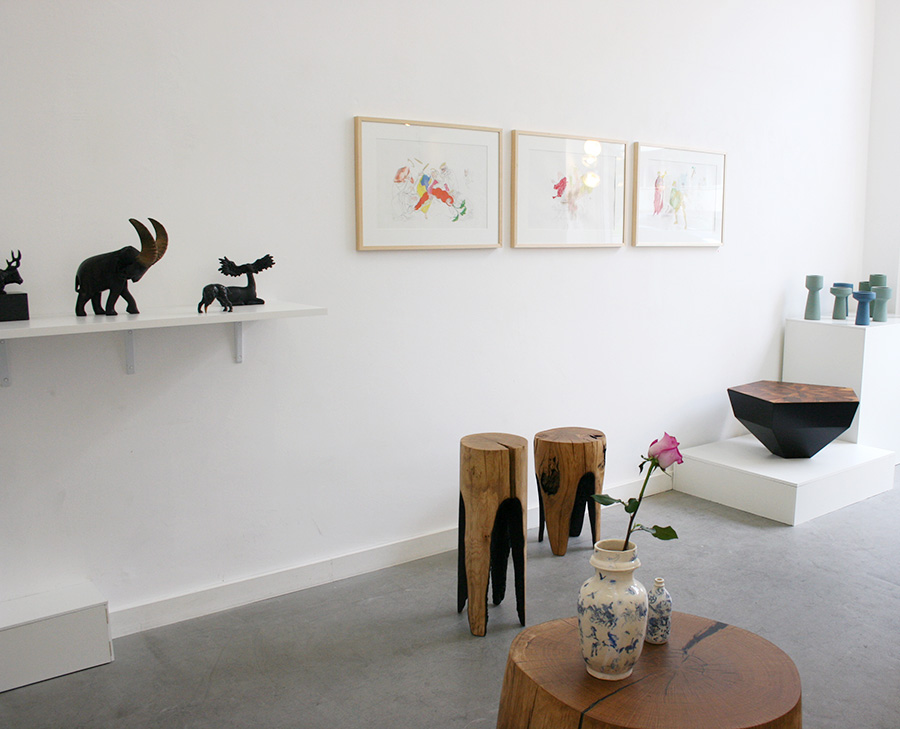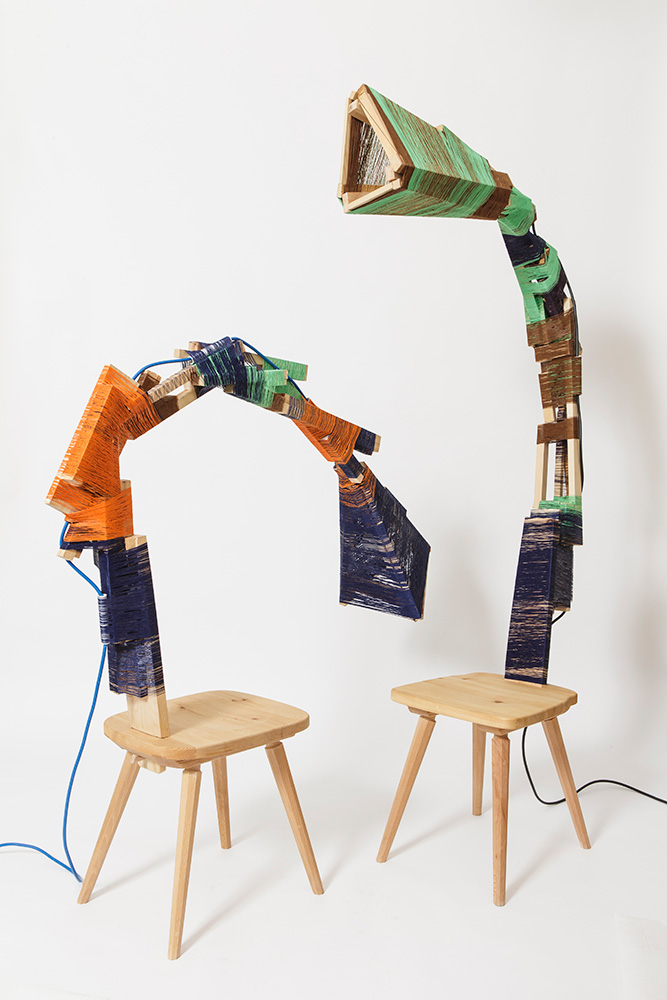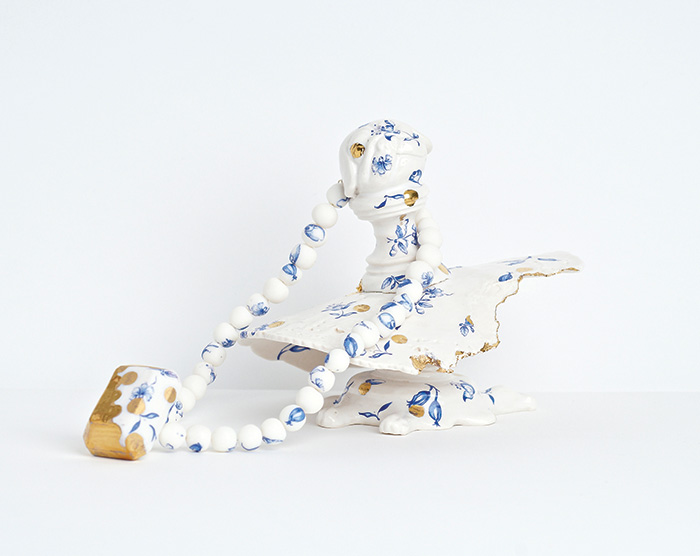Édition limitée | Dedelley, Le Moigne, Loellmann, Schäfer

ÉDITION LIMITÉE I FRÉDÉRIC DEDELLEY, NICOLAS LE MOIGNE, VALENTIN LOELLMANN, TOBIAS SCHÄFER
Exhibition from april 26 to june 22, 2013.
The Bauhaus did challenge the traditional distinction between the creative fields, thus fine art, architecture and design was to understand as a whole without distortion of value. From that conceptual point it was possible to consider art in a serial and industrial way. This important step converged art and design in the possible share of a similar reflexion as well as similar production methods, so this is not a surprise that the design market ends up to meet the art market and, in turn, develops analog sale strategies.
The exhibition édition limitée I at Kissthedesign gallery gathers 4 contemporary designers, Frédéric Dedelley, Nicolas Le Moigne, Valentin Loellmann and Tobias Sebastian Schäfer, that sometimes beside an industrial production, create in limited edition or even unique pieces.
The production in limited edition develops marginal to industrial production, also if it can share the same technics it allows designers to experiment outside the limits imposed by the function and mass production.
Even if design already entered the gallery space in the 50’s with Steph Simon in Paris, and that the Memphis group forced to a serious reconsideration of functionalism and so called beauty, the phenomenon Design in limited edition is quite new. The need of the collectors for limited design is big and the crisis maybe also strengthened this appetite for high end and rare items, that are produced by highly specialized craftsmans or even by the designer himself. This demand expands to content and concepts and further blurs the boundaries between art and design.
The designers Frédéric Dedelley and Nicolas Le Moigne produce as much for big manufacturers (Atelier Pfister, Eternit, Wogg, Inch furniture, etc.) as for galleries (Helmrinderknecht, Libby Sellers, etc). The projects that they design for galleries are often produced in high value with expert know how and explore the conceptual accordance between form and material.
The vase Lévitation (8+1AP, 2012, for Helmrinderknecht) by Nicolas Le Moigne for instance is a technical masterwork. The vase made of ceramic seems to float over the surface but stay in balance on a rounded base. Nicolas Le Moigne develops form and material to poetry.
For the Slip lamp designed for Libby Sellers gallery, London (12 + 1AP), Nicolas Le Moigne works with Eternit waste as he did for the trash cube (for swiss manufacturer Eternit in serial production), thus the trash of the one gets the artwork of the other. For the Slip collection (one stool and one lamp) Nicolas Le Moigne keeps the traces of manufacture. The remains of Eternit left by the moulding process are not cleaned and become integrated to the final product and even determine the uniqueness of each piece.
Frédéric Dedelley’s works for galleries seems to question their own status of rare and luxury object as much as to expose it.
The lamp Objet Lumière N°1 that Frédéric Dedelley designed in 2011 for Matteo Gonet’s collection Glassworks Editions (limited edition of 8 pieces) combines state of the art Led light technology with the beauty of traditional glass techniques. The lamp is a true piece of jewellery and expresses pure luxury.
His Objets Mélancoliques N°2-9 (6+2AP, 2011, Helmrinderknecht) are directly set in a temporal and historical axis. Produced with an archaic craftsman method (lost wax process) in a bronze and brass alloy, this serie of objects, vases, vessels, has everything of an archeological relic, even the patina. But the geometric, minimal and contemporary forms bring the aesthetics of the 21st century into the context of civillisations.
Valentin Loellmann and Tobias Schäfer, for their part, dont work for manufacturers, the produce each of their unique pieces in their ateliers in an handcrafted way. If they share similar researchs about material with Le Moigne and Dedelley, functionality is sometimes absent of their reflexion.
Valentin Loellmann is a good example of what the galleries design market can offer. His work, exhibited in international galleries (Gabrielle Ammann, Cologne, Galerie Gosserez, Paris, etc.), is manufactured in his studio with a straightforward creative approach. He treats material like living organisms, for they represent the opportunity to merge with other elements in various ways and in their fusion stamp the final piece with its unique character.
Valentin Loellmann is quite far from the questions related to industrial product design, of course his objects, tables, cabinets, stools, can be used but often the artistic world developed by the designer is stronger than the function. Thus he builds up his cabinets m. & mme. around the idea of the family. Ten new pieces are added each year, giving expression to the family narrative that runs as a red thread through this collection. Since the pieces do not only get their meaning from their individual characteristics but also from their relation to one another, to the story that connects them and to the man that made them, it becomes unclear whether you experience one object or many, whether their aim is functional or relational, whether you produce or create or whether you obtain or adopt.
The time context is also visible in the serie Kruk, where he puzzles together aged and weathered ship planks before to enclose them in a polyester skin.
Tobias Schäfer is the only of the 4 designers that has a fine art education without any relation to product design. He came to design through sculpture, installation and scenography and his relationship to contemporary art is omnipresent in his work.
Tobias Schäfer uses a catalogue of recurrent forms, colourful geometric polygonal forms, that he spreads in series, where every unique piece can complement or comment another one of the same family. Like a kind of pastiche of serial production. Tobias Schäfer is not interessted in producing identical pieces but to connect them in a narrative and conceptual coherent context.
The Sticks serie shows very well Tobias Schäfer’s current reflexion : they are multifunctional objects, seat-tables or sculptures with repetitive forms that he extends with the artistic process of chance. The base is made of several wooden bars that he puts in movement before the glue freezes them in their final position.
Close to Ready-made, Tobias Schäfer recycles everything, his own forms as well as parts of vintage or antique pieces of furniture. Old pieces of furniture represent for Tobias schäfer an amazing experimentation space, where he can finally release the item of its serie as well as of its function.
